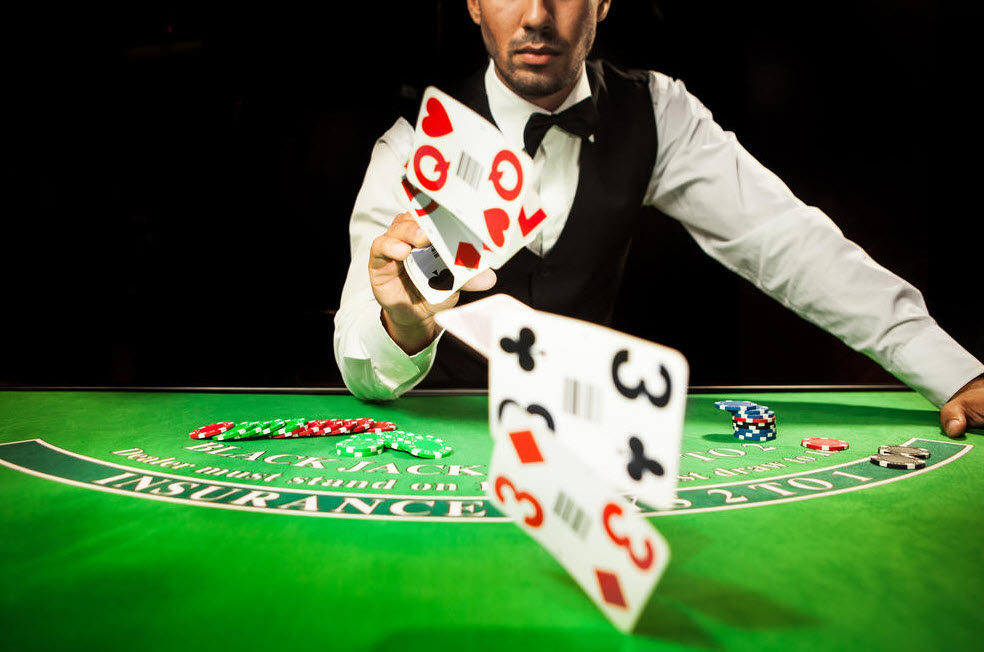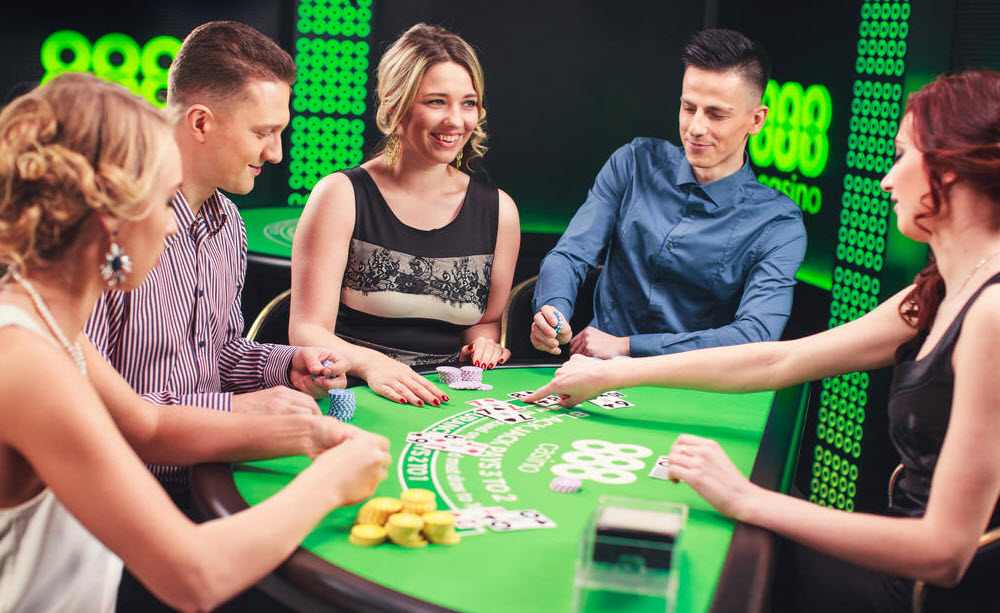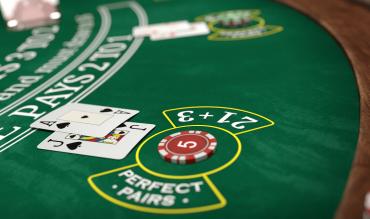Basic strategy and card counting are the foundation of advantage Blackjack play. It was the very first approach taken to beat casino games. And it started people thinking about how to attack casino games for profit. Card counting and basic strategy gave the player the tools to take on the casino. That’s the pure "scientific" part of the game. Winning at blackjack is mostly “science,” but it’s also an art.
Artful play is an extension of the mathematical foundation. Another artful type of play comes from thinking outside the box. There are a few “artful things” you can do to increase your mathematical edge at blackjack.
Poor Penetration
To a card counter, deck penetration is an important component of a winning approach. The problem is that penetration seems to be growing worse and worse as the years go by.
Six-deck shoe games are the standard in most casinos today. Some casinos cut off two decks out of the six and others may go down to a deck and a half. Higher minimum one-bet tables usually cut off a little over a deck. With typical rules, a one to 10 betting spread and a solid counting system like the basic High-Lw system, cutting off an extra half deck will increase your hourly expected win in units
- 1.5-deck cutoff: 1.8 units per hour
- 2-deck cutoff: 1.3 units per hour
Occasionally a player can be stuck at a casino that consistently cuts off two decks. The silver lining is, you don’t have to lose quite the full amount of the difference between that and the 1.5 deck penetration. That’s because poorer penetration lowers your "averaged" bet size and hourly standard deviation that is approximately 7%.
And by shuffling away many of your "would be" maximum-sized bets you are adequately able to handle the swings associated with a 1.5-deck cutoff, then you can increase your betting action modestly and still run the same short term risk of ruin if they’re cutting off two decks.
Trying to upscale all your bets by 7% isn’t necessary here – there’s a more direct way to compensate. You can just keep all your units the same size and use a moderately faster betting ramp.
In the above example with the High-Low system, the risk of losing a 25-hour trip bankroll of 300 units shrinks from 11.5% down to 10% when the penetration gets worse. But an expected win rate of 1.4 units per hour (rather than 1.3) was later achieved with the same 11.5% risk of ruin by steepening the betting ramp during poor penetration.
With either betting ramp, the lifetime bankroll will have a greater ROR (risk of ruin) since the lower hourly wins won’t grow your bank as quickly. Hence it won’t contain the extra "cover" money to handle the prolonged negative swings down the road.

Playing Three Hands
Anytime there’s at least one other player at the table, and the count is positive, you’re better off playing two hands rather than just one. When playing two hands each bet should be 2/3 of the bet. However, there’s almost no justification for ever playing three hands. "Almost" is the operative word here.
There is a particular situation when it’s definitely correct to play three hands. This is when the count is positive and the last round of the shoe is coming up. By betting three boxes in this spot, you’d be sucking one or two extra hands out of the shoe you never would’ve gotten. Since optimal bet sizing is 100% for one hand, 133% for two hands and 150% for three hands, playing three hands will get the most money into action before this positive shoe ends.
To identify when the last round of the shoe is coming up you need to watch things closely. At the beginning of the shoe when the dealer inserts the cut card, make notice of where it is. By comparing that to the cards in the discard tray when the cut card pops out, you’ll be able to gain a good feel for just which round will be the last. If you think this is the round and you’ve got a positive count, play three hands if you can.
Camouflage
Many pit bosses will recognize a basic strategy "mistake" when they see one, but very few will know a big mistake from a small one. Those glaring, but small mistakes are the ones you want to make in front of your pit boss and the eye upstairs to put them at ease about you.
Doubling down with 12 against a deuce or a 3 for example is a pretty big mistake. But doubling for "less", say for one tenth of the bet is only one tenth as costly and still makes quite an impression about your play. Particularly when you are betting a minimum bet.
So if you feel the need to lay down some cover and have either of these hands, double it for an extra tenth of a bet. You don’t have to worry about the pit boss not seeing it – most dealers’ will announce your "bonehead" play out loud. The overall cost of this move is about 25% of the extra doubled amount. So when you’ve bet $20 and doubled 12 against a deuce for an extra $2, you’ve just blown 50 cents on average.
Another tightrope an advantage player finds himself constantly walking is the Insurance conundrum. You may have 20 against an Ace up and decline to insure a good hand. Later you may want to insure a 13. How is surveillance to evaluate that?
A way to smooth out this picture is to occasionally insure your 20 in an unwarranted count for say, one tenth of the bet. Later, when you have a big bet up with a weak 13 sitting in front of you, toss a nice round amount out there, somewhere near but probably a little less than half the bet. Appear haphazard and imprecise about both plays.
What’s the cost? Insuring your 20 in a neutral count costs 8% of your insurance bet. Shorting your insurance bet in a +4 true count costs 2.5% of the shorted amount. So if you insure a $20 bet with a neutral count for $2, that’ll cost you 16 cents. Later, if you get only $100 down on a $250 bet with a +4 true count, you’ve given up 62 cents.

Side Bets & Hand Interaction
Hand interaction is when you double down on another player’s hand, either in partnership with him or entirely by yourself. These interactive doubles usually carry a known edge going in of 5% to 10%.
There’s another related advantage technique that can also improve your EV. That’s making “side bets” with players to your left and right. At many blackjack tables, a camaraderie develops where players behave interactively, i.e., high fiving, etc. This atmosphere lends itself to your making advantageous side bets on four particular hands. They are:
- 19 against a 10
- 18 against an 8
- 10 against an Ace
- 10 against a 10
What these four hands have in common is that the player is favored to win every one of them. Most players don’t think so.
When the player next to you has 19 against a 10 with a $25 bet up and the dealer’s already checked the hole card, ask if you can double it for them. Make sure you stipulate that a "push" is no bet. If he wins he pays you $10 or $15. If he loses he keeps your bet. You’re giving him the opportunity to hedge his wager with 19 against a scary looking 10, and if they take it you’ll have a 7% edge.
The player’s edge and hence your side-bet edge on 18 against an 8 would be 10%. A player’s 10 against a non-21 Ace has an 8% edge, and a 10 against a playable 10 has a 3% advantage.
Blackjack is a game rooted in mathematical precision. Card counting and Basic Strategy can be solved and results can be confidently evaluated. As this discussion shows there are additional opportunities that can be had if you can recognize and execute them while playing. These are only a few. How many more can you find?


